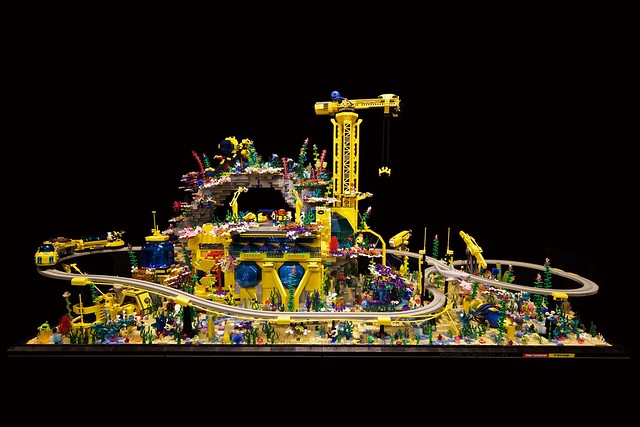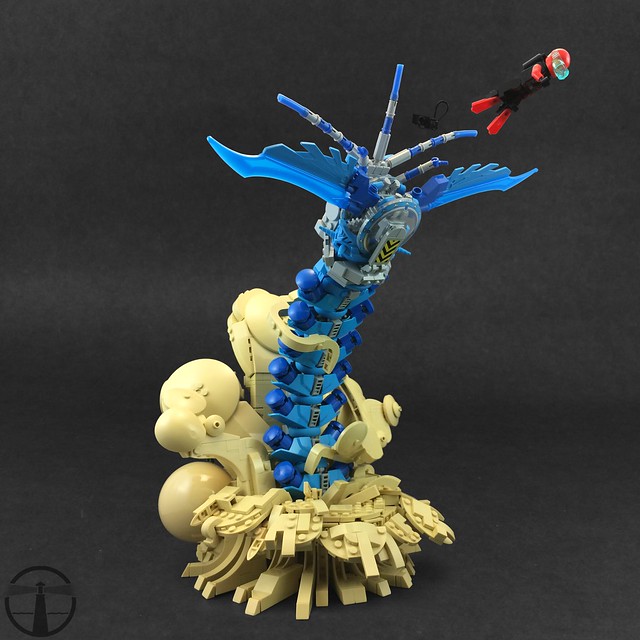Here’s the thing, my LEGO collection is seriously outdated. I haven’t kept up with the newest sets for a few years, and I’m not familiar with the latest parts. Plus, all the teal that I own date back to pre-2006, so… you get the idea. But sometimes these limitations can push a builder to create something more interesting. When I see this Seahorse and Moorish Idol build by Ben Cossy, I can immediately appreciate every brick that has gone into it (and name each one on the top of my head). Using just a few standard, classic parts, Ben captures the essence of the two sea creatures quite effortlessly. The exposed studs on these creatures resemble textured scales of their real-life counterparts. The layered plate construction on the Moorish Idol and flexible hose spine on the seahorse add to the realism. This marine life build is genuinely calming and even reassuring to look at. It’s like they’re telling me, “Hey, it’s ok. You don’t need the latest parts to build something cool.”
Take a deep dive into our archives to see some more ocean-inspired builds!











